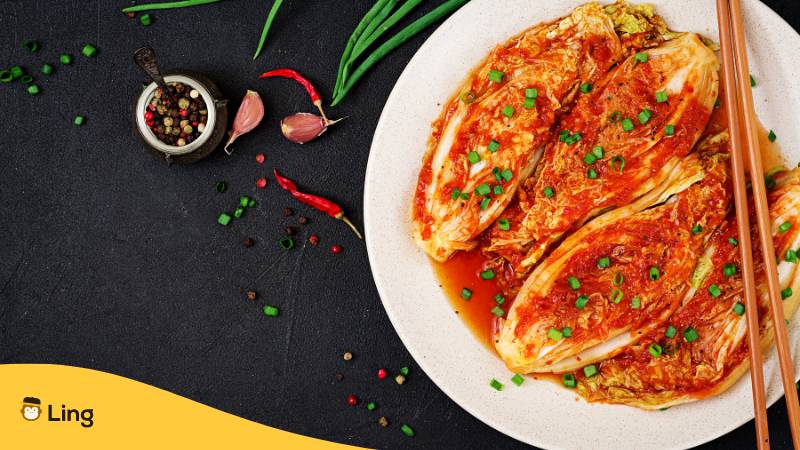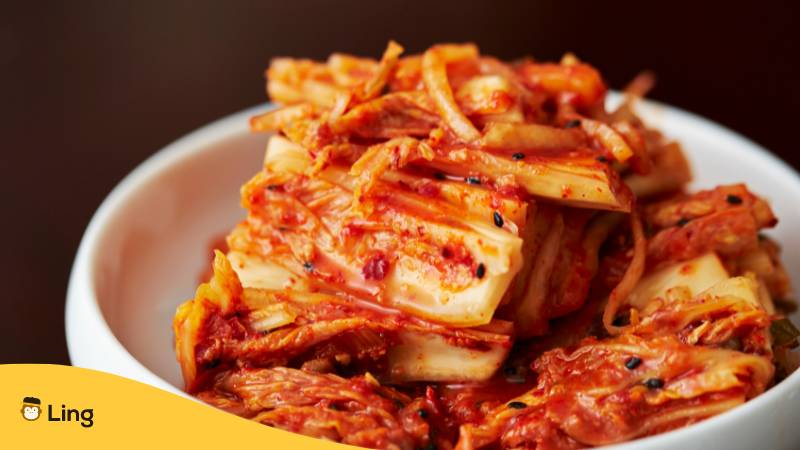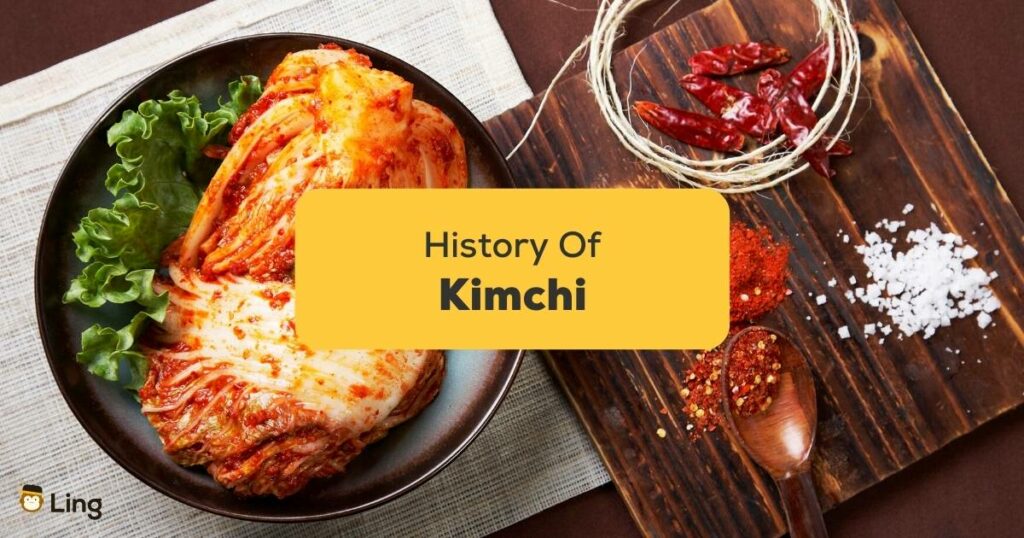If you haven’t heard of it, 김치 or Kimchi is a traditional Korean dish made from vegetables and is known to be one of the most celebrated delicacies in Korea. In this post, we’ll cover the history of Kimchi and what makes it super special. If you’re ready for that, keep reading below!
There’s no denying that many countries have embraced Korean food and culture throughout the years. Thanks to the popularity of K-pop idols and K-dramas, it’s impossible not to walk the streets of your home country and not see anything that is related to Korean. In fact, that’s why it’s now so common to see food joints offering samgyeopsal with unlimited side dishes everywhere you look. And if there’s one superstar ingredient that makes Korean food stand out from the rest, it’s gotta be Kimchi. But what exactly is Kimchi, and why is it so popular? Let’s find out.
What Is Kimchi?

Kimchi is a traditional Korean dish perfect for anyone who wants a healthy dose of probiotics. Since it is fermented with probiotic lactic acid bacteria (the same bacteria you can find in yogurt), this dish proves that it’s possible to stay healthy without settling for unsavory dishes. While it does have a strong flavor and smell, you’ll either love or hate it. But if you’ve never tried it before, we highly recommend giving it a chance!
This traditional Korean side dish is usually made of salt and vegetables like Korean radish or napa cabbage and seasonings like Korean chili powder, green onion, etc. It will then be fermented for one to two days and can be eaten within one week from the date of making it. Do note that other kimchis can last a long time, but that usually means that the taste will be slightly different than the freshly made one. But I think both still taste amazing when rice and some nori flakes are added.
History Of Kimchi

Most of you who are in love with Kimchi must be curious about where it was invented and how the glamor of this tasty Korean cuisine started. Well! We will provide you with all the bits of its origin and history.
Early History
This pickle jar consisting of fermented vegetables has its roots way back than you might’ve thought. The most authentic document of the three kingdoms of Korea shows that this dish was famous during the Silla period, around 57 BC-AD 935, when Buddhism became famous in the country, and people started paying more attention to vegetarian food.
Many years back, people fermented foods to increase their lifespan, and that’s the same process that Kimchi had to follow back then. This process was usually carried out in winter to save food by storing vegetables and burying them in the mud. After some time, when they knew the vegetables had reached the stage where they could be pickled quickly, they put the veggies in the traditional pot called onggi.
Kimchi, also known as slicked-radish, gained popularity at the start of Koryo. Until then, Korean Kimchi was made only with pickles and vegetables. By 1500, Korea started importing chili, so the locals began adding more flavors like red pepper powder and fish and shellfish paste, also known as chotkal in South Korea, to improve the taste.
Modern History
The modern history of Kimchi dates back to the Vietnam war when the Korean government wanted to provide this tastiest and one of the most famous side dishes with lots of health benefits to the troops so they could also enjoy this delicious side dish.
Korea has a special kimchi recipe that they never compromise on. The same problem arose when the Japanese commercialized Kimchi, the primary source of trading kimchi. So in 1996, Korea complained to Japan that the Kimchi they prepared and transported did not taste precisely like Korean Kimchi. It used to taste more like asazuke, a Japanese pickled side dish of fresh vegetables.
Their complaint was sent to an organization affiliated with the world health organization regarding the standards of this sensational dish, Kimchi, so that the proper guidelines would be followed in serving the food. That’s when they provided standard methods to prepare Kimchi.
Standard Ingredients
The criterion of making Kimchi was released in 2001, explaining all the bits and bobs of Korean Kimchi. Throughout that, the title of significant ingredient was given to salted napa (baechu) cabbages to be used along with some fresh seasonal vegetables and seasonings like salt, chilies, etc. This Kimchi is called Baechu Kimchi.
After having all the ingredients ready, there is a dire need for lactic acid bacteria at a shallow temperature. This standard production of Kimchi increased its export to other parts of the world, and it also benefited the import of Chinese Kimchi made up of Chinese cabbages to Korea.
Demand To Consume Kimchi Boosted
This was the beginning of the popularity of traditional side dishes having tasty ingredients like pickled vegetables and soy sauce. This healthy food is full of irrefutable tastes that many people worldwide have started craving. And as its demand increased, its price increased as well.
But that’s not the only reason. Another reason behind the increased cost of ingredients of this fermented food was heavy rains and a reduction in the harvest of the vegetables. Thus the price of the ingredients is picked at an incredible speed.
Wrapping Up

That was how your favorite dish was created. For more cultural fun facts, join Ling App, which has mind-blowing ways of learning any new language.
Ling app provides an exciting teaching mode through flashcards and quizzes that keep the learners engaged and the lessons informative and entertaining. So if you are a language learner and eagerly want to learn a new language, this is the best platform.
The only thing that you need to do is install the app Appstore or Google Play, select a language, and you can enjoy the language journey of your favorite language.





















